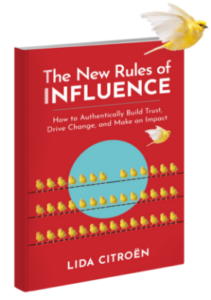Last time you attended a conference, did you just show up and “wing it”? What were your results? Or, did you have goals to achieve by attending and participating?


I view time as way too precious to waste taking the chance that I’ll meet the right people, have the right conversations, and drive the results I want. I prefer to take control and drive as much effectiveness from these events as possible.
Do you?
Recently, I attended (and spoke at) a national conference in Florida. Attendees came from all over the country and varied from college students and educators to business professionals. I noticed some gaps in how everyone approached the event and networked to get more from it than just the program content. Here are my tips for networking at a conference:
Before You Go:
- Gather your business cards. Don’t be that person who can only take a card and not have one to offer in return.
- Know which attendees you want to meet. Email them in advance of the meeting, and either set up a time to meet or send them a message similar to this: “ I look forward to seeing you at the event. I’ll be the guy in the University of Texas dress shirt.”
- Prepare. Wear comfortable shoes. You’ll be doing a lot of walking and standing at a conference, and this is not the time to try a new pair of high heels. Bring mints, too. You’ll likely drink a lot of coffee, so mints really save the person you’re talking to.
- Plan your follow up. Before you go to the event, have an article ready that is timely and relevant to the topic of the event. As you meet people, mention that you’ve found an article you’d like to send them. Then, when you do, they are amazed you remembered.
- Practice your elevator speech. This is something to prepare and practice well in advance! Introduce yourself in a compelling, interesting, and relevant way to your new contacts.
At the Event:
- Turn your tag around. If your name tag is on a lanyard, pinch it to your shirt, so it stays facing forward. That way, people can see your name and approach you confidently without having to stare at your chest to see your name (awkward!).

- Make eye contact. Most people will look down to avoid looking like they don’t have anyone to talk to at these events. Become the initiator and greet people with good eye contact, a smile, and a handshake!
- Go first. If you’re asking a question of a panel or of a speaker, introduce yourself first. Tell the audience your name and role, instead of just blurting out a question. Remember to see every action as a networking opportunity.
- Collect business cards from people you meet. While you might keep your cards handy in the name badge holder, put cards from people you meet in a separate pocket. You don’t want to accidentally hand out someone else’s card. When you have a minute alone, make notes on the back of the cards you’ve collected to help your follow up. Did you offer something specific as follow up? Are they interested in your work? Did you mention that you’ll see them at another meeting soon? Capture these notes before you forget.
- Prepare questions in advance. Small talk can be really challenging. Aside from “what brings you here?” Think about three questions you could ask, such as: “What did you think of the viewpoint of the last speaker?” Or “Who are you here to meet?” (This is my favorite because if I know their target audience, I can facilitate an intro!)
- Don’t take rejection personally. Some people don’t like networking, and they might meet your genuine approach with resistance. That’s their issue, not a rejection of you. Move along…
After the Event:
- Follow up soon. Some people like to send emails to their new contacts that same day, so the name is fresh in their mind. I prefer to wait a couple of days. Personalize your follow up. Refer to something you discussed when you met (which you should make notes of on the back of their business card).
- Connect on LinkedIn. If appropriate, send a LinkedIn invitation — personalized! Remind your contact where you met and what you discussed. Since some high profile professionals are very discerning about who they connect with, don’t take it personally if they choose not to accept your invitation.
- Keep in touch: If there is a follow up meeting or phone call to be set, do it. If you will see them at another event, note that in your communication. Put a note into your calendar to periodically check in and touch base with those target contacts you see high networking value from.
Because of the time, money, and effort it takes to attend a conference, you must make it work for you! Our personal brands come to life when we interact with others, and conference participation is a great place to practice your messaging, body language, and self-marketing!

